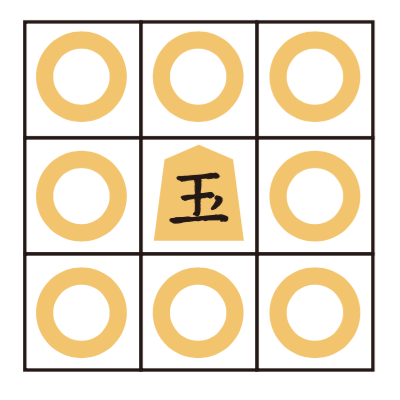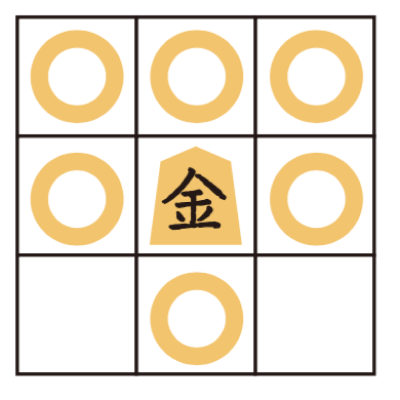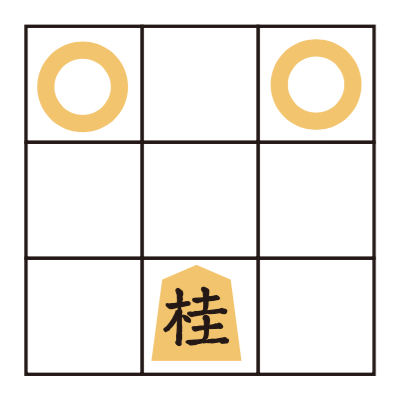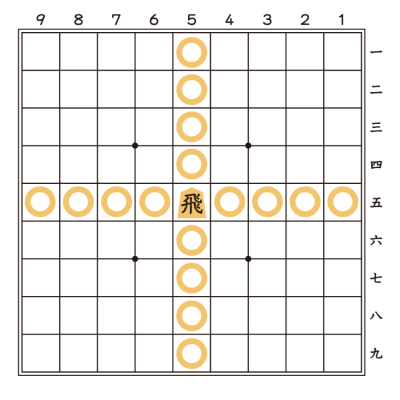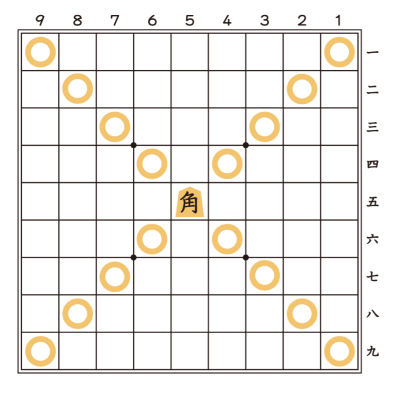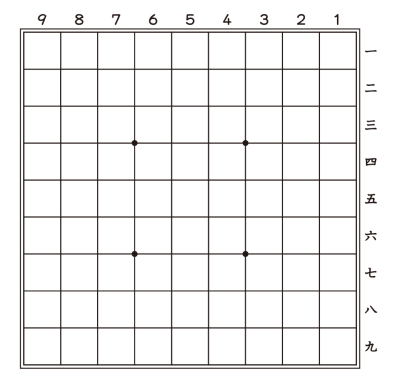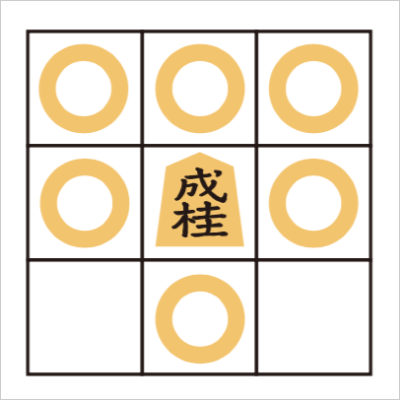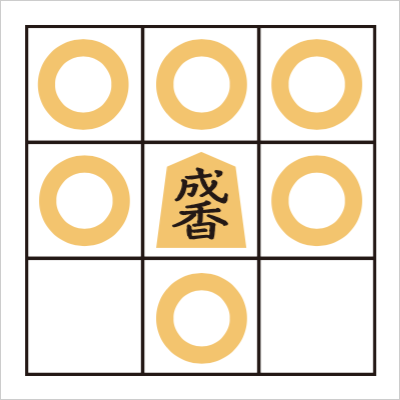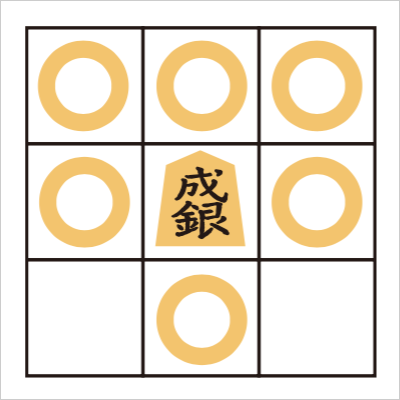Shogi Rules
What is a Shogi like?
Two players take turns moving their pieces on a board and the one who captures the opponent’s Ousho (King) wins.
Basics of Shogi
First of all, let’s try to remember the types and moves of pieces!
-
Ousho, or King Gyokusho, or Jewel
[Gyokusho: One of the two kings that should be used by a lower-ranked player, Ousho: used by a higher-ranked player] Gyokusho (Ousho) may move one step in any direction per move. This is the most important piece in Shogi. A player who loses this piece will lose the game.
-
Kin, or Gold
Kin may move one step vertically, horizontally, or diagonally forward, but not diagonally backward. Its movement looks like a mushroom shape or an umbrella, doesn’t it?
-
Gin, or Silver
Gin may move one step diagonally, or one straight forward, but not horizontally or straight backward. You may have a picture of a person who raises his/her arms in the air.
-
Keima, or Knight
Keima may move one steps forward plus one step forward diagonally. With the shape of this movement, you might remember Hopscotch you played in childhood. Yes, “hopping and hopping” on one foot, and then “landing” with both feet.
-
Kyousha, or Lance
Kyousha may move forward any distance. Please note it never moves backward or sideways.
-
Fu, or Pawn
Fu moves one step straight forward. Even though Fu is a small piece, you can count on this!
-
Hisha, or Rook
Hisha, may move vertically or horizontally any distance. It plays a role of a pivot in offense in Shogi game.
-
Kaku, or Bishop
Kaku may moves diagonally any distance. To keep the correct diagonal line, try to move this, pointing empty spaces along a diagonal line with your finger.
Preparation
-
A Shogi board has 9 × 9, 81 squares, and the vertical rows are called “file,” and horizontal rows “rank”. When a particular file or rank is described, a file is written in Arabic numbers and a rank in Chinese numbers.
-
Each player has twenty pieces respectively. Set up your 20 pieces (one Gyoku, two Kin, two Gin, two Kei, two Kyousha, one Hisha, one Kaku, and nine Fu) in your base (the first three ranks from your side). There are several ways to set up pieces. It is the most popular way among professional Shogi players to follow the order described in Figure 10 (named Ohashi style).
Shogi Rule
Shogi is a game played by two players. The first one who capture the opponent’s King or Jewel will win the game.
-
Two players move pieces by turns. Making a move is called “Sasu” in Japanese.
-
A piece that you have captured and held outside the board is named “Mochigoma” or a hand piece. Putting this piece on the board is called “Utsu.”
-
You can capture the opponent’s piece in your possible path. To capture a piece is referred to as “Toru.”
-
When your piece enters the opponent’s camp, you may turn over the piece to be transformed. This turning over is called “promotion,” and promoted piece is called “Narigoma”.
It’s time to remember the types and moves of promoted pieces!
-
Tokin
Promoted Fu, or Pawn. It may move in the same way as Kin, or Gold.
-
Narikei
Promoted Kei, or Knight. It may move in the same way as Kin, or Gold.
-
Narikyo
Promoted Kyousha, or Lance. It may move in the same way as Kin, or Gold.
-
Narigin
Promoted Gin, or Silver. It may move in the same way as Kin, or Gold.
-
Ryu
Promoted Hisha, or Rook. This promoted version may move as a Rook, and one step diagonally.
-
Uma
Promoted Kaku, or Bishop. This promoted version may move as a Bishop, and one step vertically and horizontally.
If there is anything we can help you with,or you have any questions,
please do not hesitate to contact us.
